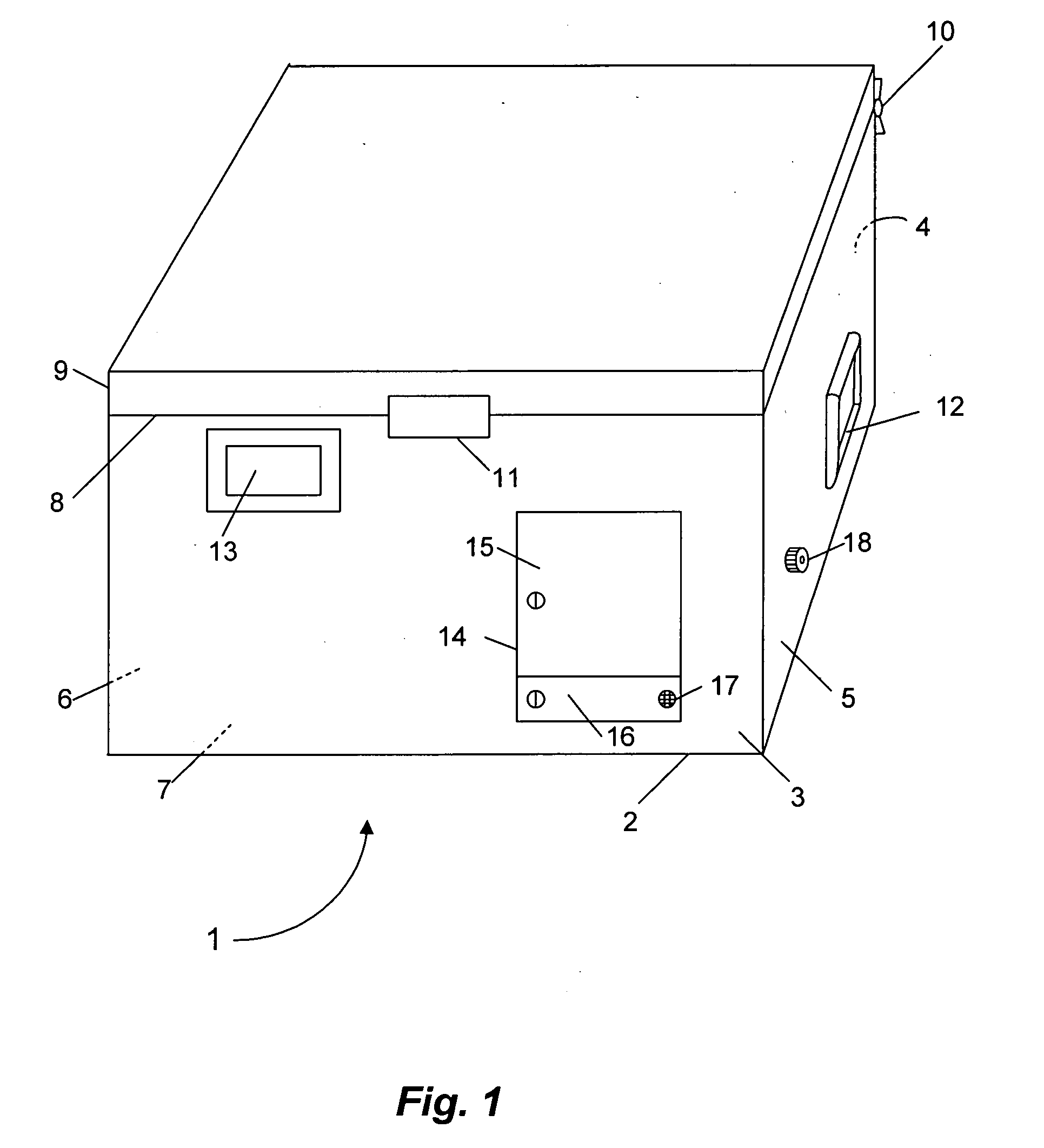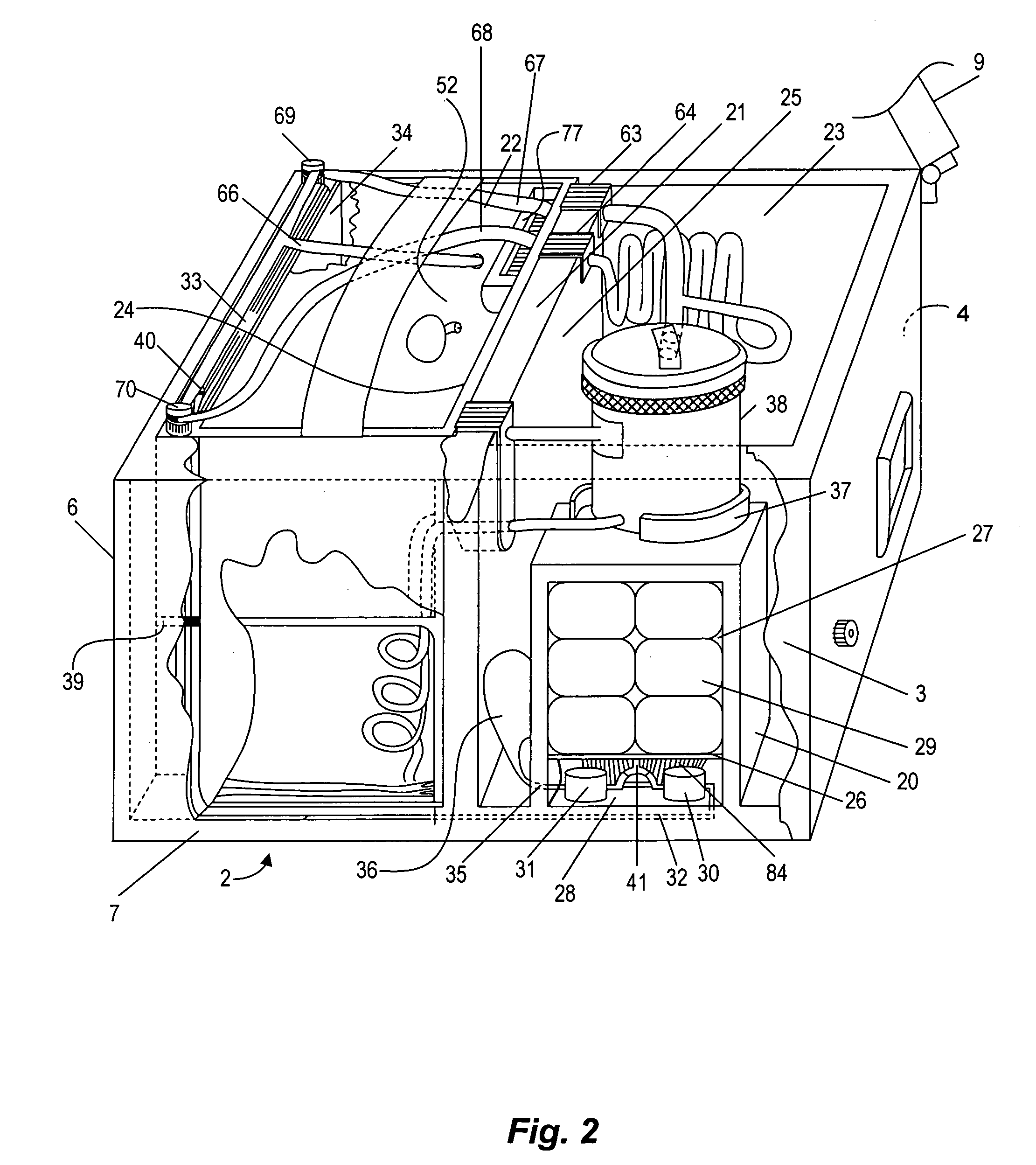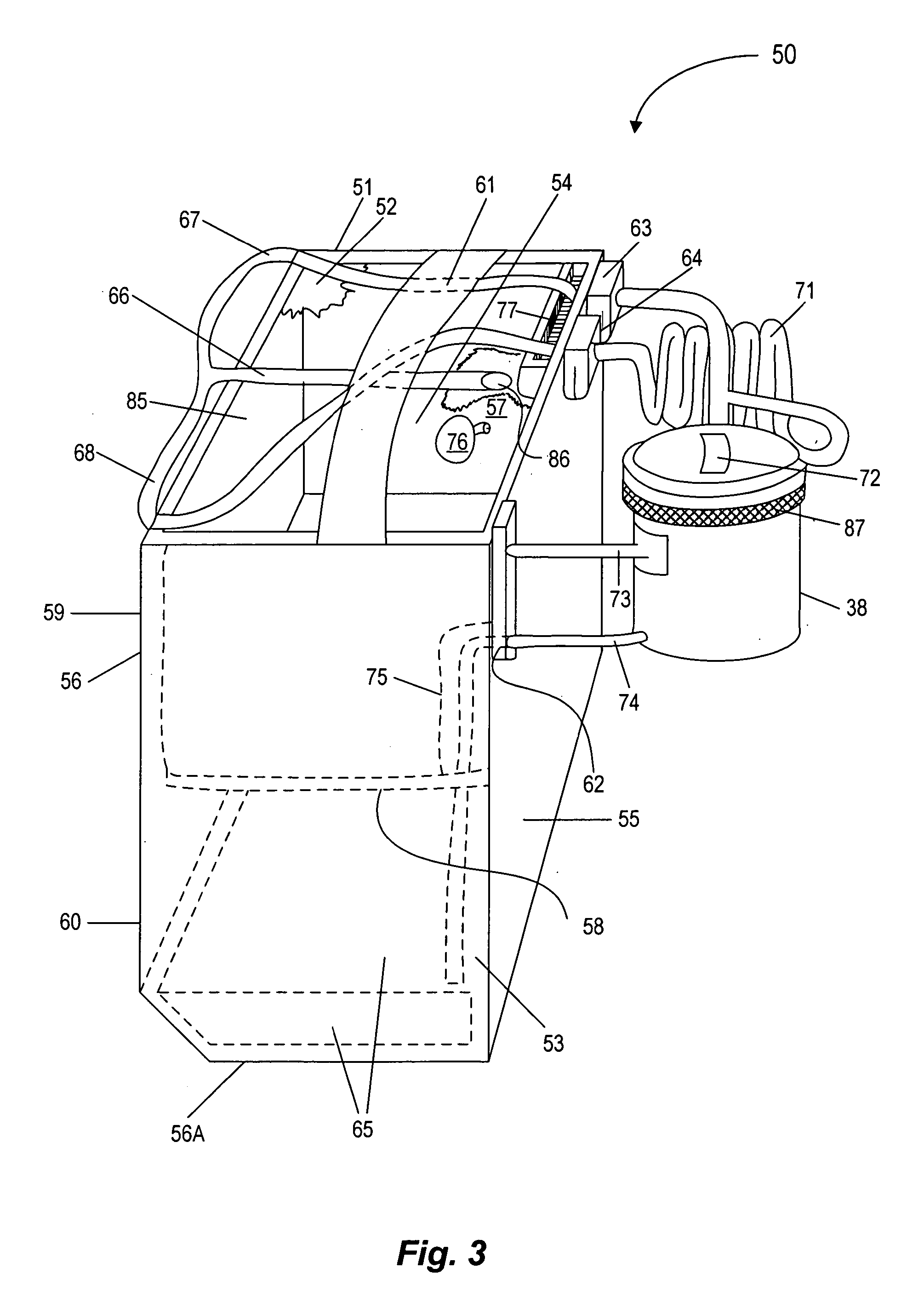Warm intermittent perfusion
a technology of mammalian organs and perfusion, applied in the field of perfusion of mammalian organs, can solve the problems of limiting the number of cardiac transplants that can be performed, reducing the viability of mammalian hearts, and reducing the number of transplants. the effect of time and cost saving
- Summary
- Abstract
- Description
- Claims
- Application Information
AI Technical Summary
Benefits of technology
Problems solved by technology
Method used
Image
Examples
experiment 1
[0088] Preservation of the Canine Heart for 40 Hours Using Two Bouts of IP
[0089] Five dog hearts were stored for a total of 40 hours. The hearts were cardioplegically arrested using CP-11EB (see formula below) and stored by immersion at 0° C. for 40 hours, with perfusion at 20 and 36 hours of storage with a 25° C. cardioplegic solution (CP-11EB) at a perfusion pressure of 55 mm Hg for 5 minutes. As is evident in Table 1 (below), hemodynamic and contractile function when these hearts were transplanted after 40 hours of storage, and after weaning from cardiopulmonary bypass (CPB), were normal and remained stable without inotropic support for at least 6 hours.
TABLE IHEMODYNAMIC AND CONTRACTILE FUNCTION OFTRANSPLANTED CANINE HEARTS PRESERVED FOR 40 HOURS,AFTER WEANING FROM CARDIOPULMONARY BYPASS (CPB)HoursHeart rateSystolicDiastolic+dP / dt−dP / dtoff(beats / pressurepressure(mm(−mmCPBmin)(mm Hg)(mm Hg)Hg / sec)Hg / sec)1145 ± 20105 ± 2242 ± 5 986 ± 204−684 ± 3502129 ± 12102 ± 1946 ± 71035 ± 2...
experiment 2
[0091] Biochemical Definitions of the Optimal Intermittent Perfusion Time
[0092] Experiment 1 was conducted using 5 min intermittent perfusion bouts. In order to better define ideal intermittent perfusion perfusion times, the effect on PCr and ATP levels of varying the period of 25° C. cardioplegic perfusion in dog hearts stored at 0° C. for 20 hours was studied using P-MRS at 62.5 mmHg. As illustrated in FIG. 9A, at the onset of perfusion, PCr was only 3% of the prestorage level. As perfusion progressed, PCr rose linearly with time and was over 100% after 42 minutes. ATP level was 72% at the beginning and gradually reached 90% by 13 minutes of perfusion (see FIG. 9B). Intracellular pH was acidic and did not change for the first 10 minutes. It then rose and reached the physiologic range by 25 minutes (see FIG. 9C). Intracellular inorganic phosphate (Pi) levels declined steadily with warm perfusion time (see FIG. 9D). FIGS. 9A through 9D show changes in PCr and ATP levels, intracellu...
experiment 3
[0093] Preservation for up to 46.5 Hours Using 2 Bouts Lasting Longer than 5 Minutes and Using CP-11EB / CP-11H
[0094] On the basis of the results given in Experiment 1 and in FIG. 9, preservation periods exceeding 40 hours were investigated. CP-11EB is a preferred solution for use as a flush solution for hearts in the current invention. CP-11H is the same solution, but with 6% High Molecular Weight hydroxyethyl starch (Hetastarch) [B. Braun Medical, 2525 McGaw Avenue, Irvine, Calif. 92614]. Other molecular weight preparations of hydroxyethyl starch (HES), such as the “pentafraction” used in the commercial VIASPANRR® solution (Barr Laboratories) or the “pentastarch” ingredient being used in the PENTALYTE® solution (BioTime, Inc.) will also be effective in the invention. In principle, the inclusion of HES should reduce edema and help to combat damage caused by intermittent perfusion lasting longer than 5 minutes. However, in two experiments involving storage for only 36 hours, it was f...
PUM
 Login to View More
Login to View More Abstract
Description
Claims
Application Information
 Login to View More
Login to View More - R&D
- Intellectual Property
- Life Sciences
- Materials
- Tech Scout
- Unparalleled Data Quality
- Higher Quality Content
- 60% Fewer Hallucinations
Browse by: Latest US Patents, China's latest patents, Technical Efficacy Thesaurus, Application Domain, Technology Topic, Popular Technical Reports.
© 2025 PatSnap. All rights reserved.Legal|Privacy policy|Modern Slavery Act Transparency Statement|Sitemap|About US| Contact US: help@patsnap.com



